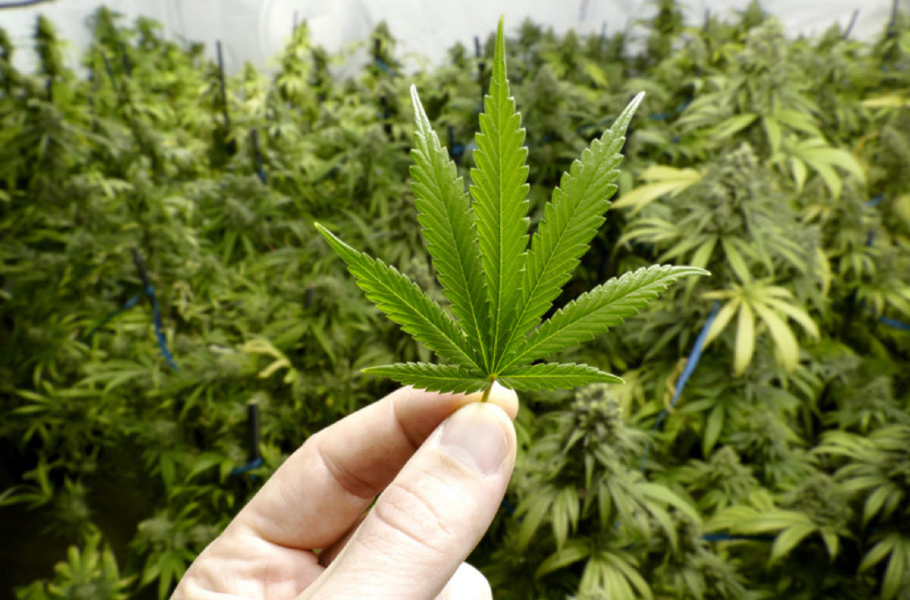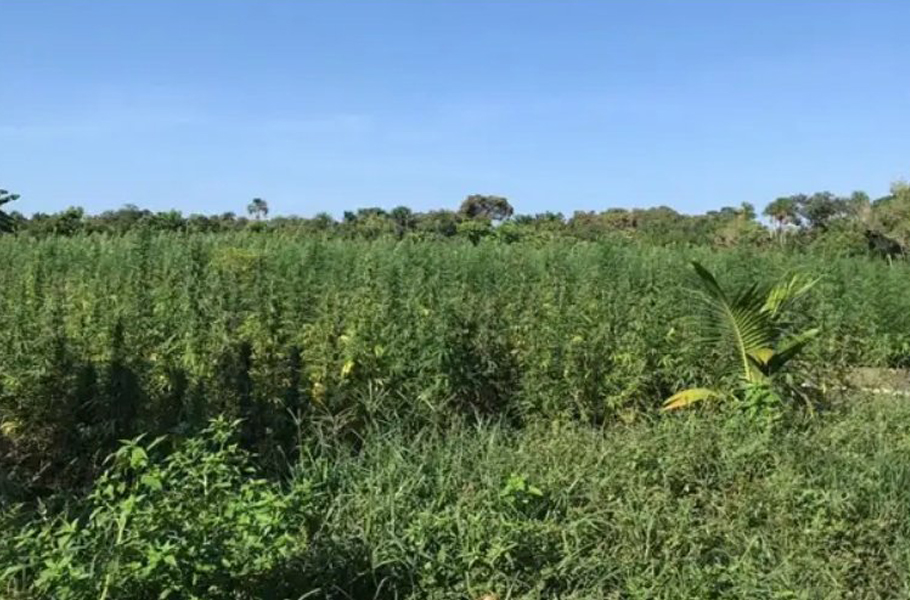
- Home
- News
- Analysis
- States
- Perspective
- Videos
- Education
- Entertainment
- Elections
- World Cup 2023
- Features
- Health
- Business
- Series
- Economy Series
- Earth Day
- Kashmir’s Frozen Turbulence
- India@75
- The legend of Ramjanmabhoomi
- Liberalisation@30
- How to tame a dragon
- Celebrating biodiversity
- Farm Matters
- 50 days of solitude
- Bringing Migrants Home
- Budget 2020
- Jharkhand Votes
- The Federal Investigates
- The Federal Impact
- Vanishing Sand
- Gandhi @ 150
- Andhra Today
- Field report
- Operation Gulmarg
- Pandemic @1 Mn in India
- The Federal Year-End
- The Zero Year
- Premium
- Science
- Brand studio
- Home
- NewsNews
- Analysis
- StatesStates
- PerspectivePerspective
- VideosVideos
- Entertainment
- ElectionsElections
- Sports
- Loading...
Sports - Features
- BusinessBusiness
- Premium
- Loading...
Premium

Marijuana: What brought Bollywood to its knees keeps Manipur ‘high’
The cannabis plant has been the mainstay of livelihood for many villagers in Manipur, particularly in some of the economically backward districts, for decades despite a ban on its cultivation, posing a dilemma for the government’s anti-drug drive.

A group of friends in a remote district in Manipur has never smoked in their lifetime but they do know how to churn a good marijuana crop at the end of every year. Blissfully unaware of the nationwide storm over weed, these cannabis farmers in Manipur’s countryside are rather getting ready for their next harvest. The cannabis plant has been the mainstay of livelihood for many villagers in...
A group of friends in a remote district in Manipur has never smoked in their lifetime but they do know how to churn a good marijuana crop at the end of every year. Blissfully unaware of the nationwide storm over weed, these cannabis farmers in Manipur’s countryside are rather getting ready for their next harvest.
The cannabis plant has been the mainstay of livelihood for many villagers in the state, particularly in some of the economically backward districts, for decades despite a ban on its cultivation, posing a dilemma for the government’s anti-drug drive.
The ubiquitous flowering plant that also sprouts abundantly in the wilds in the state is sowed around June-July and harvested in December-January.
After harvesting, leaves, flowers, seeds, and stems of the plant are dried to produce marijuana or ganja, which is now in the news following the ongoing Narcotics Control Bureau’s investigation into the alleged widespread use of the psychoactive substance by Bollywood stars.
According to many villagers, the dried bud variant is considered to be the best weed. The traditional methods used by farmers in Manipur to produce it requires semi-drying of the buds. They are then left for a day after tightly binding them with a piece of cloth. After a day, they are unpacked and cured for a couple of months.
Hashish, which is stronger than marijuana, is made from the dried resin of the cannabis flowers.
Easy harvest
Cannabis is cultivated mainly in the state’s Churachandpur, Tengnoupal, Ukhrul, Kamjong, Kangpokpi, Chandel and Imphal East districts with alleged nexus of some militants, politicians and officials of security forces.
Not many years ago, an Assam Rifles colonel was caught with four truckloads of ganja and timber.
In most seminars and case studies done on cannabis farming in Manipur, it has been highlighted that cannabis cultivation is highly profitable and can be harvested and sold without much hard work.

Given the poor road connectivity and the exorbitant transport cost to the nearest town, it is economically unviable for farmers to sell their agricultural produce in neighbouring towns, according to a case study done at the behest of the department of economics of the Manipur University.
The study done by a research scholar Vino Raman pointed out that the market for ganja was in the village itself, with the buyers coming to the villages to procure the substance.
Due to high proceeds and the lack of any other feasible options, farmers are more than willing to take the risk to grow cannabis as a commercial crop.
The cost of 50kg ganja is anything between Rs 50 lakh and Rs 60 lakh in the grey market, according to sources in the Manipur Police.
Marijuana produced in Manipur, considered one of the best in the country, is in high demand in West Bengal, Bihar, Gujarat, Maharashtra, Rajasthan and Andhra Pradesh, and is frequently smuggled out from the state using newer innovative ways.
Last year, Manipur Police recovered 20 kg of ganja “concealed” among vegetables from the cargo warehouse of budget carrier IndiGo at the Imphal airport.
For the last couple of decades, farmers in these areas have also started growing more lucrative poppies, the sole source of opium, which is processed chemically to produce heroin and other synthetic opioids.
Weed-ing out
Cultivation of cannabis has been banned in the state since 2000 under the Narcotic Drugs and Psychotropic Substances Act, 1985. Violating the provisions of the Act will invite imprisonment for a term extending up to five years and a maximum fine of Rs 50,000 for the first time . For the second and subsequent offences, the Act provides for a minimum prison term of 15 years and a fine of Rs 1.5 lakh.
To dissuade farmers from illegal substance farming, Manipur Director General of Police LM Khaute held a series of consultative meetings recently with chiefs of around 80 cannabis and poppy producing villages.
The village chiefs were asked to pursue villagers not to cultivate cannabis and poppies and to cooperate with the state police in its drive against drugs.
The police were forced to take the help of the village chiefs as its drive against such cultivation failed to yield the desired results.
Altogether, 3,015 acres of poppy plants and 19.51 acres of cannabis plantations were destroyed in the drive carried out at 29 different locations by law enforcing agencies of the state in 2019, according to a report of the Manipur Police released this year. During the same period they also seized 61.2 kgs of marijuana and 229 kgs of opium.
The village chiefs in most northeastern states, particularly in tribal areas, wield considerable influence among villagers, and often work as a bridge between the government and the people.
In the meetings, the chiefs pointed out the practical difficulties in stopping the menace in the absence of an alternative livelihood plan for the poor farmers.
The DGP, who is recuperating from COVID-19, could not be reached for his comment, but another senior police officer said the village chiefs were asked to submit their respective plans to the district superintendent of police for the government’s perusal.
The area under illegal substance cultivation in the state though has not been mapped. It is rapidly increasing, the official said. Lack of infrastructure, human resources and rough terrain make it difficult for law enforcers to prevent the cultivation, he added.
The state government is also considering legalising cannabis plantation for medicinal and industrial purposes following the footsteps of Uttar Pradesh and Uttarakhand, the two other BJP-ruled states.
An announcement in this regard was made by Chief Minister N Biren Singh in the Assembly earlier this year. The matter was also reportedly discussed at length in a cabinet meeting last year.
The move, apart from generating additional revenue, is expected to discourage farmers from cultivating poppy, which the state’s BJP government considers more nefarious than cannabis.
At a seminar held earlier this year on the topic ‘Cannabis cultivation in Manipur: Prospects and Constraints’, many experts including senior police officer Th Brinda opined that poppy cultivators should be encouraged to grow cannabis by legalising its plantation.
Benefits of cannabis have been scientifically proven and yet people were not taking advantage of its business prospects and medicinal as well as industrial values, she said.
If the growth of poppy cultivation in the state is left unchecked, Brinda and many like her fear, Manipur would be doomed within the next 10 years.

